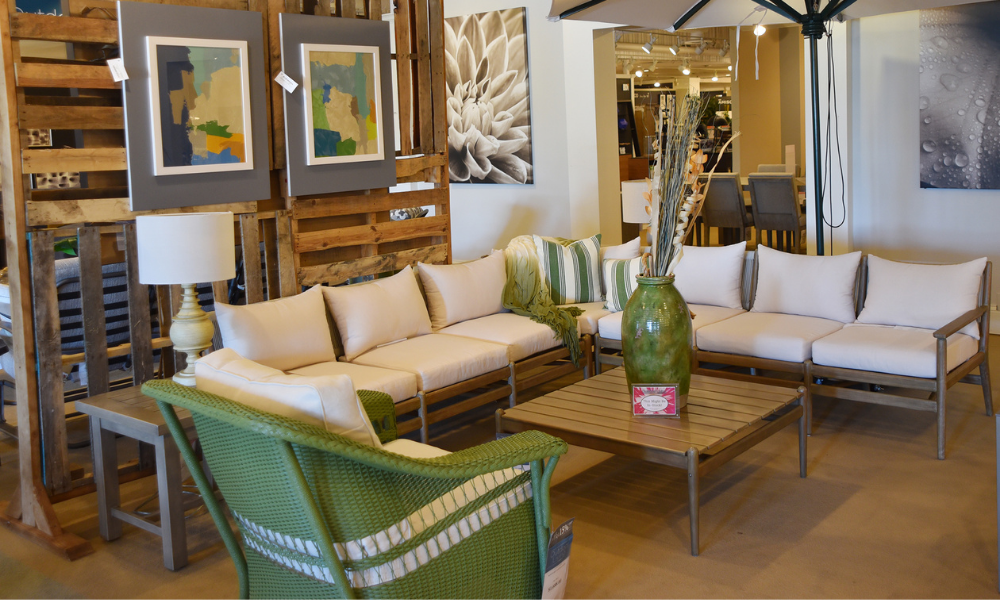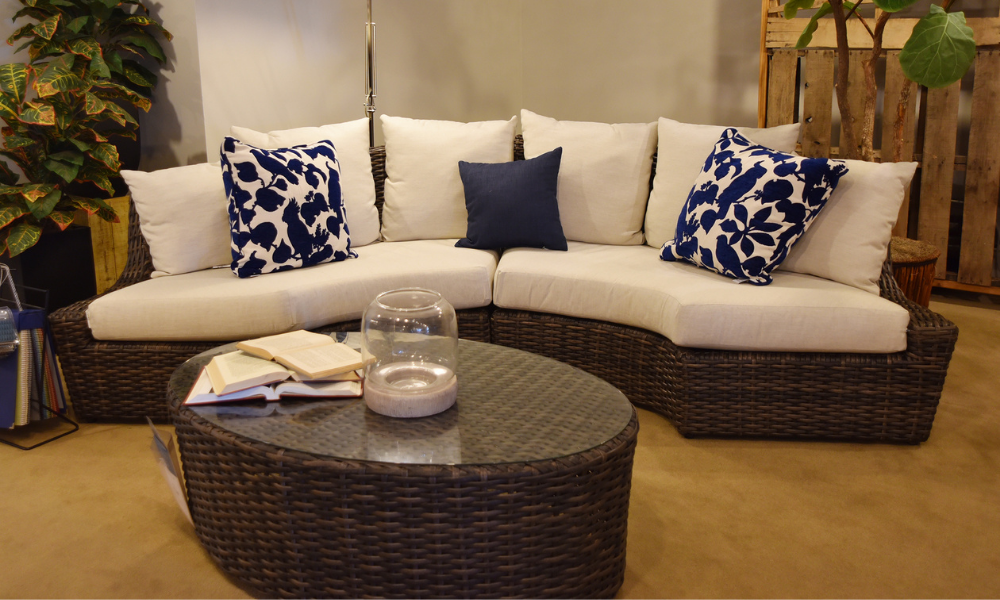INDIANAPOLIS — Kittle’s neighbors and customers in Indiana knew what they wanted, so Kittle’s delivered.
After a 25-year-absence, the Indianapolis-based retailer brought back outdoor five years ago, and as it turns out, the pandemic led to the re-introduction, a re-thinking, of virtually every area of the 90-year-old retailer’s business.
Kittle’s, which is privately owned, is well-known in the Indiana marketplace for offering the most and newest home furnishing styles, in prices for every budget, in the living room, dining room, bedroom and home office. It has the largest design studio in the state, along with rug and outdoor patio galleries. Additionally, more than 70% of its inventory is made or assembled in the U.S., some of it in Indiana.

Still, the effects of the pandemic led to some retail soul-searching.
“A huge challenge was reinventing ourselves as we re-opened after the pandemic,” says Chris Nordhoff, corporate visual director and senior buyer. “A company-wide vision was to look at the performance and relationship of each vendor to determine how many vendors do we really need. The result was a reduced vendor floor slot count in all categories to help create a more open shopping environment. Criteria in making these decisions was based upon a review of sales, profit margins, lead times, quality, rep relationships and positioning within the marketplace. This in turn simplified the buying process and more importantly the consumer selling process, providing a better customer experience. “
Those who made the cut in outdoor include Polywood, Jensen Leisure, Woodard, Lloyd Flanders, Castelle, Bernhardt, Treasure Garden and Armen Living.
“Each of these vendors was chosen as being the best of class within their specialty type of outdoor furniture,” said Nordhoff. “That and the retailer/vendor relationship are very important.”
The process led the company to expand outdoor from its flagship store in Indianapolis to its outlying stores in Indiana, with the biggest focus on recycled plastic. Currently, recycled plastic now represents half of all overall outdoor sales and therefore represents a large square footprint of the outdoor gallery, while a quarter is woven and a quarter is aluminum and teak.
Supply chains and sales changes
Like many, Kittle’s has been dealing with long lead times on the part of vendors, especially for special order product.
The store, says Nordhoff, “has a long history of strong special order sales (for all categories) — those in which customers choose the fabrics and finishes to best suit their needs. That business model had to pivot to accommodate the consumer wanting immediate delivery. We began to selectively stock product in most all categories, at all price points. With outdoor, up to 80% of our sales were special orders, but we didn’t want to walk any customers so began stocking, minimally at the best price points and heavier with good and better goods. It’s proven to be quite successful.“

To get the word out about the goods, Kittle’s uses TV, social media, email blasts, direct mail, city billboards and digital signage, in store signage, vendor kiosk and configurators and more to get across all of its messages. In addition, Kittles’ website now offers e-commerce and is constantly being updated.
Nordhoff says that Kittle’s relies on the tried and true to set itself apart from other retailers.
“Since Kittle’s has a good, better best assortment in all categories, with a focus on better, I followed that philosophy in outdoor too,” says Nordhoff. “Shown are a few opening price points, some best items and a lot of better product. Within the outdoor assortment, we offer several options of furniture — woven, aluminum, iron, teak, teak alternatives, fully upholstered and recycled plastic. This helps us over all bases as most competitors do not offer this broad of an assortment. Another very important differentiator is the implementation of Outdoor Specialist — having senior selling consultants who spend the majority of their time in the outdoor gallery and are well-versed with the vendors, special order process, trends and lead time availability.”
Sell it on purpose
Kittle’s is intentional in its approach to sales. It merchandises outdoor by vendor, which makes it easier for the selling team to quickly reference special order price books, fabric and finish sections — which effectively tells a consistent features and benefits story for each vendor. The recycled plastic category is purposefully shown outside in a courtyard adjacent to the indoor gallery.
To sell the product, Kittle’s gets weekly stock availability reports or researches them on dealer websites, so it can tell consumers what’s available, what the lead times are and what the reasons are for any delays.

To compete with casual specialty retailers, Kittle’s uses the rest of the store to help convince customers to buy outdoor.
“Since Kittle’s is a full-line furniture store, we seize the opportunity to convert those customers already shopping for living room, bedroom furniture, etc… into outdoor customers as well,” says Nordhoff. “Another difference-maker is the fact that our customers can have peace of mind knowing we have in-house warehouse and delivery personnel. The entire shopping experience (selection, buying, follow-up, receiving, delivery) is handled and processed 100% by Kittle’s employees.”
Any advice for other full-line retailers who carry outdoor or who are thinking of it?
“Talk to other retailers across the country,” Nordhoff says. “Ask what categories and vendors do they offer and why. Which are the most successful? Shop the competition, not just the big boxes and well-known places — but the independents too. Know your marketplace and make decisions that will differentiate you from the rest. And schedule a meeting with the store manager and selling staff to get their perspective.”
This story first appeared on sister publication Casual News Now.




